Romney Marsh, Kent
There’s not a great deal to look at. But that’s why you come to the marsh, to marvel at the absence not only of city clutter but features of any kind. Save for hawthorn bushes. And sheep. And the ghosts of old smugglers.
The Guardian’s product and service reviews are independent and are in no way influenced by any advertiser or commercial initiative. We will earn a commission from the retailer if you buy something through an affiliate link. Learn more.
For all that, it invites autumn exploration – of villages, such as St Mary’s in the Marsh, where children’s author E Nesbit lies in the churchyard beneath a wooden grave marker carved by her husband, or the Royal Military Canal (which isn’t an ounce as pompous as it sounds), sliding past pretty Appledore. There’s an antiques “barn” at the old station if the weather’s bad.

If you’ve a bike, so much the better. The roads are quiet, flat and shielded (sometimes) from the wind by tall hedges. Frogs plop in reed-lined ditches, and ancient churches, spared the clunk of the Victorian age, are cool and spare like beach-bleached wood. St Thomas à Becket at Fairfield could vie for prettiest small church in England were it not so modest. St Dunstan at Snargate once reeked of smugglers’ tobacco.
When you tire of the inland sea of bare fields and ewe-y pastures, crunch along the gravel at Dungeness, or run up and down the dunes at Camber. Or head to Dymchurch, celebrated as the home of the fictional smuggling vicar, Dr Syn. Maudlin and down at heel? Or evocatively out-of-the-way.
You’ll be spoiled for pubs. Visiting the tiny Red Lion at Snargate (opposite the church) is like stepping back in time. Rye’s Globe in the Marsh is state-of-the-art “gastro”.
Where to Stay
The Marsh isn’t replete with fancy hotels, but Romney Bay House (doubles from £95 B&B) at Littlestone has always intrigued me.
Tom Blass, author of The Naked Shore: Of the North Sea (Bloomsbury, £20)
St Mary’s Vale, near Abergavenny, Monmouthshire

St Mary’s Vale is an exquisite National Trust woodland above Abergavenny, on the edge of the Black Mountains. The sessile oaks that carpet the steep sides of this valley have grown into a host of extraordinary shapes. While a few trees have attempted to grow straight, the vast majority abandoned that long ago and have taken on strange, twisted forms, with branches at irregular heights in unpredictable directions. There are trunks with giant, bulbous growths and branches which have grown out horizontally before collapsing back to the ground. The carpet of leaves and liverworts, the uprooted mangled trees and the electric green moss that coats many of the branches combine to mesmeric, magical effect. This type of woodland, known as Atlantic or western oak wood, is characteristic of western Britain. Conservationists prize the rare species of lichen and moss often found in these damp woods.
St Mary’s Vale is stunning in autumn, when chinks appear in the leaf canopy and light falls in ethereal shafts. Sometimes, particularly if I am walking downhill fast, the dappled light plays tricks and I sense that these gnarled, misshapen trees are moving, and closing in on me: when I stop, they stop, like some supernatural version of grandmother’s footsteps.

A walk from the small car park just beneath the wood around St Mary’s Vale only takes an hour or so. To make an afternoon of it, continue up beyond the oak trees on to the moorland and climb Sugar Loaf, the iconic, southernmost peak of the Black Mountains, originally known by the more enigmatic Welsh name, Mynydd Pen-y-fâl. From the summit, the views over the Usk valley and the sculpted heights of the Brecon Beacons are superb. On the way back through St Mary’s Vale, follow the stream called Nant Iago, which is lined with alders.
Where to Stay
The Angel Hotel (doubles from £95 room only) is at the heart of Abergavenny life. There is an excellent bakery next door, owned by the hotel, for picnic supplies.
Robert Penn, author of Woods: A Celebration, published by the National Trust
Powerstock Common, Dorset

Autumn leans across the limestone prow of Eggardon Hill. Shadows lengthen, hawthorn rusts, fieldfares search the cooling land. From the dazzle of the sea (250 metres below) come the updrafts that buzzards ride. Up here, bronze age barrows lie within an iron age hill fort, as do the humped remains of trees that 18th-century gangster Isaac Gulliver planted on the seaward rump as a navigation aid for ships smuggling booty.
To the north, Eggardon drops suddenly towards a valley of oaks. These trees are the remnants of Poorstock Royal Forest, which King John acquired in 1208, along with a castle (north-west along King’s Lane) rumoured to be the grounds of Athelstan’s palace. Occasionally, if the wind is right, you might catch the long, yearning call of deer rutting below in Powerstock Common. In 1217, the Forest Charter gradually improved rights of access to all royal forests and the Common of Poorwood was established to allow locals to graze animals and gather firewood.
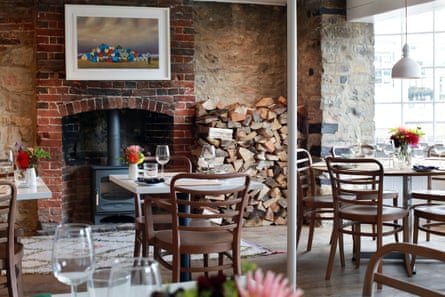
These rights were lost in 1867, when the land was enclosed, but Powerstock Common is open to the public again today, managed as a nature reserve by the Dorset Wildlife Trust, who have nurtured a wonderful mosaic of scrub, grassland, wood and coppice. is a very special place, whatever time of year you explore. An old railway line that once ran to the sea at West Bay makes for easy walking or cycling to the villages of Powerstock, Nettlecombe and Kingcombe. But there is so much life see, hear and enjoy in the different habitats of the Common itself, there’s no need to amble far.
Though for food try the excellent Brassica in nearby Beaminster, and for drink the Spyway Inn near Eggardon is a free house with lots of local ales and ciders.
Where to Stay
The Store (sleeps 2, from £400 a week, shorter breaks also available) is a self-catering barn in Toller Fratrum, a hamlet that was once the farmstead of the Knights Hospitallers and whose history stretches beyond Domesday. The Marquis of Lorne (doubles from £80 B&B) is a 16th-century inn with rooms in Nettlecombe.
Adrian Cooper, director of the arts and environmental charity Common Ground and co-producer of Arcadia, which premieres at the London Film Festival in October
Dartmoor and the Tamar Valley

Going to this part of the country is all about being outdoors in all weather. Autumn is often the best time to be here – the weather can be great and the summer crowds have gone. Whatever outdoor pursuits you’re into, you can do them on Dartmoor – riding, walking or biking. Tamar Trails organises geocaching and tree-surfing (tree-top trails) as well as walking and biking – in the Tamar Valley on the Devon-Cornwall border.
My family has always been into fishing. I came here as a child, and have kept on coming. I’ve never caught anything, but it’s about spending time with my dad, and in nature. To be in thigh-deep water – trying not to fall in – watching the river and the landscape, is heaven.
The old fishing club we used to go to when we were kids is now the terribly swish Hotel Endsleigh. The teas and gardens are superb. Visiting gardens is also a passion of mine and the area is heaving with amazing ones – the National Trust gardens of Cotehele are beautiful.

Obviously, all this outdoor activity makes you hungry. Eating a picnic outdoors works for me – egg mayo sandwiches, and a glass of wine for my dad. Food just tastes so much better outdoors. Head to Tavistock for supplies – there are a few good delis, including Crebers, which has been going for over a century, and a fantastic market.
Where to Stay
Tavistock House Hotel (doubles from £89 B&B) is a restored townhouse built by the Duke of Bedford around 1820. Out in the wilds, bang slap on Dartmoor, Wydemeet B&B has quiet rooms and a bit of luxury for £125 B&B.
Cressida Cowell, author of The Wizards of Once (Hachette, £12.99)
Rural Suffolk
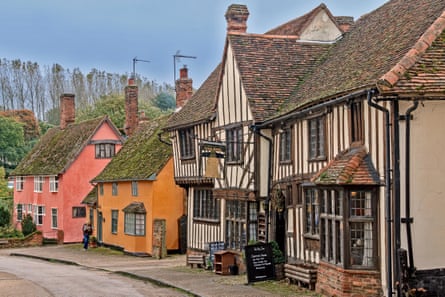
In Suffolk’s interior it feels as though the tides of modernity, so thorough and erasing elsewhere, came in slowly and only partially, leaving much forgotten and untouched.
Amid its cornfields sit sway-backed, timber-framed farmhouses, many painted traditional ochre or Suffolk pink; ruined barns crumble away, roofless and lost in nettles and ivy; and horse ponds dot the fields, dreaming of the days when Suffolk Punches still worked the land. As an agricultural county, Suffolk really is dominated by the cycle of arable crops and, in autumn, after the harvest, you get a glimpse of the landscape laid bare.
The country here feels haunted by the past, from the mysterious witch-marks scratched onto East Anglian churches – for instance, at All Saints in Barnadiston – to the flint hag stones gleaned from the fields and now cemented into garden walls. Pull on walking boots and go for a bracing walk in the Waveney Valley; there’s a range at discoversuffolk.org.uk.

For lunch, head to the tiny 14th-century Peacock Inn in the pretty village of Chelsworth, which serves superior pub grub and isn’t far from medieval Lavenham, with its higgledy-piggledy half-timbered houses.
Where to Stay
Imposing Dedham Hall (doubles from £120 B&B) is deep in Constable country, and offers art classes as well as good food and beds.
Melissa Harrison, author of Clay and At Hawthorn Time (Bloomsbury). Her new novel, All Among the Barley, will be out next year
Kimmeridge, Dorset
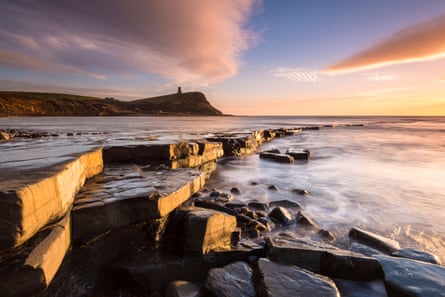
Come over the ridge and there it is, the gleaming, heart-lifting sea. Then a thin swoop of road descends from the chalk downs to the terrace of rough grass, and the rocky beach curving in a smile. Everything about Kimmeridge is quiet and great. The sea meets the land as it must have done for centuries. Most people potter on the beach, or climb the cliffs and follow the coastal path to the Clavell Tower, a 19th-century wedding cake of a folly.
I walk east around the bend, and pick over rocks to some lovely flat pavements that run into the shallow sea. Cut by crisscrossing straight lines, the rocks are mysterious and beautiful, and behind them dark cliffs rise in layers of shale and mudstone, containing untold creatures trapped millions of years ago. Walk along for a while. A raven croaks, a kestrel keens. Every so often the cliffs release a shower of shale, which lands on the rocks with a light pattering that mixes with the shush of the waves.
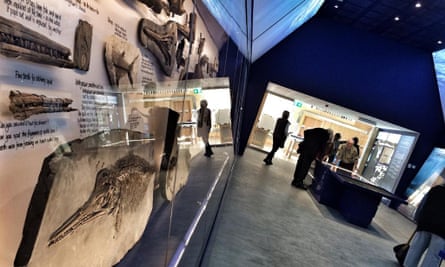
A mile away in Kimmeridge village, Clavell’s sells light lunches and cream teas, and across the road the new Museum of Jurassic Marine Life displays the finds of a local plumber, Steve Etches, who has devoted much of his life to fossil-collecting in Kimmeridge Bay. The specimens on show are astonishing, not least for their ferocious dentistry; pair after pair of serrated jaws frozen in a last gape.
Back by the sea, on a quiet autumn afternoon, nothing much is happening. The ancient rocks are warm in the sunlight. Little anemones shine like half-sucked boiled sweets, and bouquets of bladderwrack sway with the waves. I sink into a daze. Two paddleboarders glide past, while far at sea is the mirage of a huge ferry. A thin dog splashes by and puts up several oystercatchers, which fly off with loud peeps over the bright water.
Where to Stay
Kimmeridge Farm House (doubles from £90 B&B) is a three-room B&B built in the 14th-century, with bay views.
Christopher Nicholson, author of Among the Summer Snows (September Publishing, £14.99)
Crathes Castle Gardens, Deeside
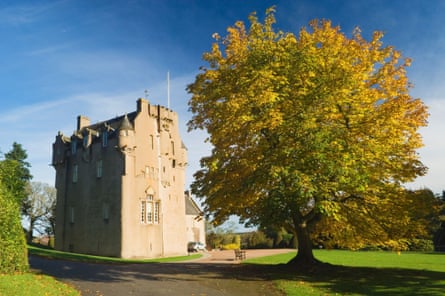
There are a thousand places in Deeside that could contend for “favourite” status, places to visit and to walk, glens and waterfalls, nature reserves, forests, rivers – and whisky distilleries if you’re so inclined. The main road from the south winds westwards through the small towns and villages – Banchory, Aboyne, Ballater, Braemar – and on towards the Cairngorms. The district is beautiful in autumn, with the harvest just over, morning mist hovering over the rivers, a few late swifts still darting over the stubble fields as they prepare to leave for the winter.
In autumn, I’ll head to Crathes Castle, a 16th-century tower house, particularly to its walled gardens. There I can indulge that delicious autumn melancholy which is also a celebration of the evanescence of the beauty of trees, plants and flowers. On a morning in autumn the visitors, like the swifts, have all but gone and I can wander the flagstone paths alone , my only companions the calling wood pigeons and contentious jackdaws, wind like a stirring finger in the high trees. The bright and strident brilliance of summer is muted; white and purple late crocuses collapse softly into the ground, hydrangeas fade to the colours of old silk, and Virginia creeper blazes against high stone walls.
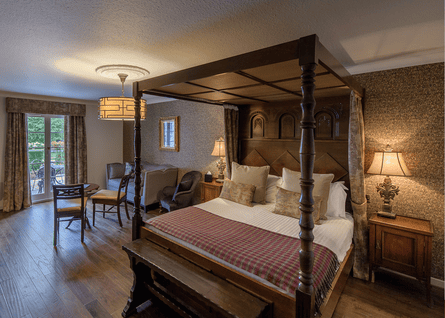
I look out over the fields to the place where, a few years ago, a Mesolithic lunar calendar was excavated and discovered to be possibly the oldest in the world: 12 hollows in perfect alignment with the phases of the moon and midwinter solstice.
The perfect warm-up after such a morning walk is a hearty beef and haggis pie at the Boat Inn in Aboyne.
Where to Stay
Banchory Lodge Hotel (doubles from £85 B&B) has the Dee on its doorstep.
Esther Woolfson, author of Field Notes From a Hidden City (Granta, £16.99)
Exmoor coast

The Exmoor coast was my home for 13 years and I have a deep love for its moors and craggy coast, unspoiled by campsites and once the haunt of Romantic poets. Autumn is especially lovely: the woods explode with oranges and yellows, the old hedgerows burst with blackberries, and there are deer everywhere, as well as buzzards and badgers.
A particular treat is strange and tiny Culbone chapel, a pre-Norman church reached through an oak-filled valley off the A39. A visit to the goat-filled Valley of Rocks is a must: Coleridge and Wordsworth admired its boulders and caverns, and, according to Hazlitt, they almost wrote a poem about it.
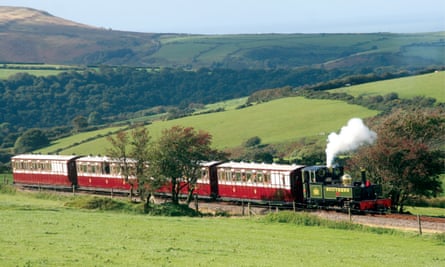
Another gem is Woody Bay station, from where you can catch a steam train to the next village, Parracombe, home of the Fox & Goose, purveyor of fine food and Exmoor ales.
There’s an easy walk from Hunters Inn, a vast pub with rooms, down the valley to the sea at Heddon’s Mouth, where German soldiers landed in the second world war. Then amble along the steep coast to Woody Bay, where you can see the remains of a pier and a brick bathing house, testament to a Victorian attempt to turn the bay into a resort.
Where to Stay
The Moorlands Hotel has reasonably priced rooms (doubles from £90 B&B).
Tom Hodgkinson, founder and editor of The Idler
West Penwith, Cornwall

Beyond Penzance is west Penwith, the last granite lump of Cornwall and its strangest and most evocative region. From Mousehole, walk west along the cliffs to Land’s End and you feel as if you’re treading a narrow path to the edge of the world. Another day or two’s walking will take you round the coast to St Ives and the newly reopened Tate St Ives. En route, in St Just, visit the Jackson Foundation Gallery for the wonderfully powerful landscapes of Kurt Jackson. Autumn in Cornwall divides between still, high-pressure days of golden light or low-pressure gales. It’s pot luck which you get. Either way, there is no more dramatic place to witness the approach of winter than on this remote stretch of coast.
Where to Stay
The Old Coastguard Hotel in Mousehole (doubles from £140 B&B).
Philip Marsden, author of Rising Ground: A Search for the Spirit of Place (Granta £9.99)
County Antrim coastline
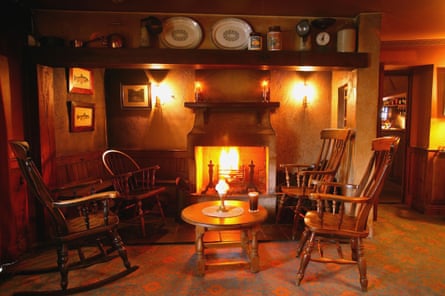
There is no warmer welcome than a roaring log fire and pint of Guinness in one of the many snug alcoves of the Bushmills Hotel on the north Antrim coast – especially if you’ve just cycled all the way up from Belfast. The Coastal Causeway Route is one of Europe’s most dramatic drives, a rollercoaster road running alongside dizzying cliffs and spectacular beaches – but I think it’s best seen from the saddle of a bike, if the weather is kind. Along the way are a string of villages that make for good stop-offs and refuelling points. From Bushmills, roll down the hill and watch the wild North Atlantic waves batter the basalt stacks at the Giant’s Causeway. This is nature at its most magnificent and raw. If the sun is shining and the wind is behind you, head east to Ballycastle. The views along the way stretch over hedgerows to pastures running down to sandy coves, low-scudding clouds shifting the light and focus all the time. At Ballycastle, stop for a scoop at Morelli’s, the Italian-Irish ice-cream parlour overlooking the harbour.
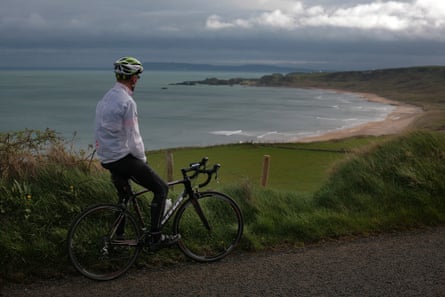
Long before Game of Thrones tourism hit this part of the world, Cushendun was famous for being designed by Clough William-Ellis in 1912. If it looks like a Cornish village, that’s because it was designed to please Lord Cushendun’s wife, Maud, who was from Penzance. It would be rude not to drop in for a pint at Mary McBride’s, a cosy, traditional pub that you may find it difficult to extract yourself from. Then push on to Carnlough, where the Londonderry Arms – once owned by Winston Churchill – serves a warming bowl of chowder with wheaten bread, as well as afternoon teas. It’s also a good place to spend the night, before heading back on yourself the following morning for the glorious strands and gaudy seaside charms of Portrush.
Where to stay Magherintemple Lodge in Ballycastle sleeps four from £625 a week (shorter stays available). Doubles from £150 B&B at the Bushmills Hotel and £65 B&B at the Londonderry Arms.
Andy Pietrasik, head of Guardian Travel
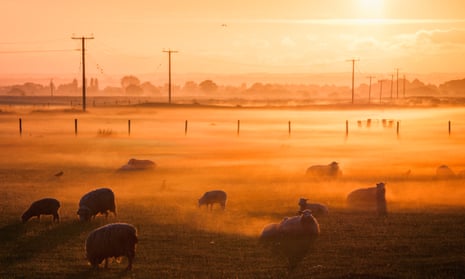
Comments (…)
Sign in or create your Guardian account to join the discussion